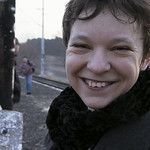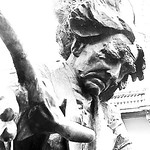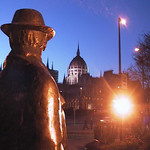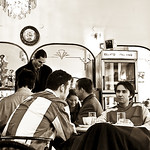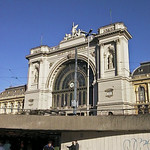Life is beautiful
It was pleasant to notice how some things don't change: Still chess players on the square in front of Keleti Palyudvar, still the same waitresses(!) in my favorite cukraszda, just outside of Astoria, still the same stalls at the same places with the same people selling the same goods.
But because of this, small changes do get noticed: In my favorite cukraszda, the sutemenyek have gotten better, Keleti is no longer being renovated, Chinese eateries seem to have sprung up on every corner, the girls have managed to start dressing even better and prices have risen, although under a stable currency.
The one change I'm not fond of is the huge number of modern shopping malls and multiplexes that have sprung up around town. Back in 1996, when I arrived in Hungary, there were none. When I left, a year later, there were three. Now, there are about 10 big shopping malls, most of them also harboring a multiplex cinema. The unwelcome side effect is that small cinemas can't compete and disappear: More than half of the cinemas in Budapest now had already gone.
Budapest, I think, is one of the three most beautiful cities in Europe, next to Rome and St. Petersburg. The city itself is relatively young, some 150 years, and originally consisted of three independent cities: Pest, Buda and Obuda. The name 'Budapest' is much older, simply because if you look on a map, the cities Buda and Pest were located right next to each other on opposite banks of the Danube.
Buda has always been the more richer part of town, with its castle hill, which functions as a natural fort. Pest claims to have the oldest metro line on mainland Europe (although the Turks tend to disagree), has wide avenues, lots and lots of art-nouveau, many parks and literally bursts with activity.
Budapest is beautiful
It is a pity that 40 years of communism has left the city more gray and run down than, say, Vienna, but at the same time has instilled more authenticity in the city itself. Less modern buildings, less modernization, have made it possible for the city to retain more of its olden character.
Walking through Budapest, I realized, again, that Hungarians, much more then Austrians, tend to act and look like southern Europeans. Particularly the young generation clearly shows Italian influences with their flare, stylish clothing, mobile phones, sipping their espressos at the city's outdoor cafes.
I had to get some new shoes and got hem on Terez Korut. My old pair were later handed over by the sales girl to a bum, right outside her shop.
I had arranged to meet with Eszter, an old friend living just outside of Budapest. Because my plans had slightly changed, I now was in Budapest a month before I had planned to be here, I figured there was a chance she wouldn't have time to see me. Surprisingly, when I called her, she said she had been expecting me that very night and therefore had kept that night free of other obligations so that we could go out for dinner together.
After my professor in 1996 had arranged for a place to stay with an old policeman who drank too much and only spoke Hungarian, I quickly tried to find another place to stay and almost had taken over Eszter's old house before I decided it was way to far from my university. We got along well, and what was originally scheduled as a 30 minute meeting, ended up being a 4 hour chit-chat with dinner and drinks. We've kept in touch ever since.
Now, working at Moret, she married some years ago and is now living in Veresegyhaz, OneRedHouse, just outside of Budapest, where the town's station is nothing more but a concrete slab next to one line of train tracks from where sandy roads fan of in numerous directions, past a Japanese garden, to distant houses.
